Edo[]
From Wikipedia:
The Edo period (江戸時代, Edo jidai?), or Tokugawa period (徳川時代, Tokugawa jidai?), is a division of Japanese history which was ruled by the shoguns of the Tokugawa family, running from 1603 to 1868. The political entity of this period was the Tokugawa shogunate.
This is the period covered in many popular works such as James Clavell's Shogun, the Samurai Warriors video games, etc.
Chōnindō (町人道) emerged as a way of life of the townspeople (Chōnin) during the Edo period of Japanese history. It was a distinct culture that arose in cities such as Osaka, Kyoto, and Edo. It encouraged aspiration to bushidō (way of the warrior) qualities—diligence, honesty, honor, loyalty, and frugality—while blending Shinto, Neo-Confucian, and Buddhist beliefs. Study of mathematics, astronomy, cartography, engineering, and medicine were also encouraged. Emphasis was placed on quality of workmanship, especially in the arts. For the first time, urban populations had the means and leisure time to support a new mass culture. Their search for enjoyment became known as ukiyo (the floating world), an ideal world of fashion and popular entertainment. Professional female entertainers (geisha), music, popular stories, Kabuki and bunraku (puppet theater), poetry, a rich literature, and art, exemplified by beautiful woodblock prints (known as ukiyo-e), were all part of this flowering of culture. Literature also flourished with the talented examples of the playwright Chikamatsu Monzaemon (1653 – 1724) and the haiku poet, essayist, and travel writer Matsuo Bashō (1644 – 94).
3D Resources[]
Kimono[]
This is probably the most iconic item of Japanese traditional clothing. The word "kimono" literally means "thing to wear."
From wikipedia:
Kimono are T-shaped, straight-lined robes worn so that the hem falls to the ankle, with attached collars and long, wide sleeves. Kimono are wrapped around the body, always with the left side over the right (except when dressing the dead for burial), and secured by a sash called an obi, which is tied at the back. Kimono are generally worn with traditional footwear (especially zōri or geta) and split-toe socks (tabi).
Kimono are traditionally made from a single bolt of fabric called a tan. Tan come in standard dimensions—about 14 inches wide and 12½ yards long—and the entire bolt is used to make one kimono. The finished kimono consists of four main strips of fabric—two panels covering the body and two panels forming the sleeves—with additional smaller strips forming the narrow front panels and collar.
The maximum width of the sleeve is dictated by the width of the fabric. The distance from the center of the spine to the end of the sleeve could not exceed twice the width of the fabric. Traditional kimono fabric was typically no more than 36 centimeters (14 inches) wide. Thus the distance from spine to wrist could not exceed a maximum of roughly 68 centimeters (27 inches).
There are a number of kimono available in formats for Poser and Daz Studio. Each has strengths and limitations.
3rd Generation Daz Figures[]
Expansion Pack for Victoria 3 MFD Adds conforming kimono sleeves to the MFD, along with a neckband+obi piece. Sleeves are approximately yukata length. Obi is reasonably detailed, if not very fancy. Conforming sleeves provide "ghost bones" and some draping morphs, though it can be trying to achieve a natural looking sleeve in some poses.
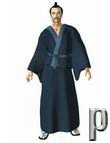
M3 Wizard's Robe Expansion
Expansion Pack for M3 Wizard Robe
Like the MFD expansion, this adds conforming kimono sleeves, neckband, and a very informal obi to the M3 Wizard Robe. The obi might pass for wandering around the house in summer.
Conforming. Very nice detaile

A3 Kimono by Royloo
d obi model. Includes tabi, but no geta or zori. Rather informal sleeves. Ghost bones and draping morphs.
Slee

Fenric's Free Kimono
ves are a bit wide.
Cox's kimono for preschoolers (no longer available)
- Poserclub Items:**
Poserclub items require an account at http://poserclub.net. The site is in Japanese. Registration is free. These items are often dynamic and require the cloth room in Poser (or some other cloth simulation software).
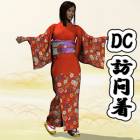
Youniss
http://www.poserclub.net/index.php?option=com_docman&task=doc_download&gid=20&Itemid=61%7C
Youniss textures for "visiting kimono" for A3, V3, Miki, TY
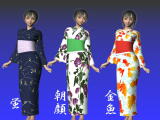
Textures for mamomamo yukata
http://www.poserclub.net/index.php?option=com_docman&task=doc_download&gid=546&Itemid=61%7C Textures for mamomamo yukata for A3.

V3 Furisode
http://www.poserclub.net/index.php?option=com_docman&task=doc_download&gid=383&Itemid=61%7C
V3 dynamic furisode (very formal kimono) by hisayan

M3 tabinin
http://www.poserclub.net/index.php?option=com_docman&task=doc_download&gid=128&Itemid=61%7C tabinin (short kimono) for M3 by HONEY
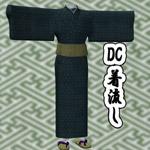
M3 Kinagashi
http://www.poserclub.net/index.php?option=com_docman&task=doc_download&gid=129&Itemid=61%7C
Kinagashi (casual kimono) for M3. Dynamic, hisayan.
Pub:contentclubs:tumb m3kinagashi.png[by Youniss]
\\
http://www.poserclub.net/index.php?option=com_docman&task=doc_download&gid=143&Itemid=61%7C Another dynamic kimono for M3 from Hisayan. Includes zori (straw sandals).
4th Generation Daz Figures[]

DS Dynamic Kimono
[Dynamic Kimono for DS by Draagonstorm]
  Requires the Daz Studio Dynamic Plugin (free). Furisode length sleeves for very formal occasions. Would normally only be worn by women. Must be posed and draped using animation, as the sleeves prevent the usual DS Dynamics rigging.
Dynamic Kimono for Poser by Draagonstorm Matches the DS version, but is optimized for the cloth room in Poser.
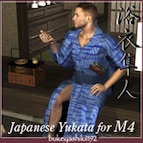
M4 Yukata
Sleeves do not pose (no elbow bend). Front panel is not attached to the rest of the kimono. Neck band is oddly shaped, and mapping distorts pattern. However, this set does contain a good male obi, traditional fundoshi (underwear) and several other interesting props. Includes wooden geta.

V4 Yukata
4
  As with the M4 version, the sleeves do not pose, mapping is distorted, etc. Nice obi, lacquered geta, assorted props.
- Poserclub Items:**

V4 Furisode
http://www.poserclub.net/index.php?option=com_docman&task=doc_download&gid=21&Itemid=61%7C
V4 DC furisode
http://www.poserclub.net/index.php?option=com_docman&task=doc_download&gid=22&Itemid=61%7C
Youniss textures for V4 DC furisode

V4 Texture Addons
Hakama[]
This can be either a skirt or split skirt worn over a kimono, traditionally by men and later also by women, especially miko (shrine priestesses). The original purpose was to protect the kimono. Usually the kimono worn under hakama is a bit shorter than usual. There are also some other kinds of shirts worn with hakama for certain sports such as kendo or archery.
Daz 3rd Generation[]
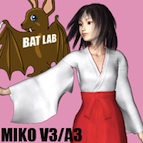
Miko
Conforming. Includes hakama, hakui (shirt), tabi, zori, traditional underpants. Hakui has ghost bones and morphs to help with sleeve drape.

M3 Jinchuken
Pub:contentclubs:m3jinchuken.jpg[Ken for M3]
\\ Conforming. Includes hakama and haori (jacket), kataginu (sort of vest/shoulderpads), an informal obi, tabi, and some inauthentic looking sleeves. \\
- Poserclub Items**
\\
Pub:contentclubs:tumb smiko-aiko.jpg[More elaborate Miko costume. Dynamic.]
\\
Pub:contentclubs:hakama.jpg[[http://www.poserclub.net/index.php?option=com_docman&task=doc_download&gid=126&Itemid=61%7C dynamic hisayan hakama for M3]]
Pub:contentclubs:samhaori.jpg[[http://www.poserclub.net/index.php?option=com_docman&task=doc_download&gid=131&Itemid=61%7C dynamic haori for M3 - hisayan]]
Pub:contentclubs:tumb kimono m3.jpg[[http://www.poserclub.net/index.php?option=com_docman&task=doc_download&gid=144&Itemid=61%7C Samurai kimono with hakama. Hisayan. Probably dynamic.]]
Armor[]
Samurai wore armor called "yoroi." There are a few examples around.
Pub:contentclubs:yoroi m3.jpg[Yoroi for M3]
Pub:contentclubs:merlin samurai bundle.jpg[Samurai Bundle by Merlin]
Pub:contentclubs:samurai helm free.jpg?143[Samurai Helmet]
Pub:contentclubs:japanese woman warrior.jpg?143[Woman Warrior] Based on Tousei Gusoku (Modern Armor) in Sengoku Era (1467~1573)
Pub:contentclubs:shukky samuraigirl.jpg?143[SamuraiGirl for Aiko3] A fantasy style with far too much skin showing for historical accuracy, but could be layered over other items for a more period look.
Other[]
Pub:contentclubs:oriental fantasy.jpgThe ["Oriental Fantasy" dress] for Laura (at Daz, by Littlefox) doesn't really look much like a kimono, but the sash makes a lovely obi
[Edo period Japanese clothes and props] Outstanding collection of historically referenced props, free for commercial and non-commercial use. Page is Japanese.
[and other figure dynamic kimono by Hisayan] Includes some very pretty furisode, but they really are best as dynamic clothing. Page is in Japanese.
[freebies] Another fine collection of Japanese freebies. Mixed contemporary and historical items, with an emphasis on festivals.
[store at Renderosity] offers a wide range of buildings and props from the Edo period.
[Way of Tea] by Merlin Studios is a gorgeous and detailed tea house with accessories based on 15th-16th century references, but would also be at home in the Edo period and subsequent timeframes.
[[1]] Many historical models from various periods, mostly buildings and props, not always textured
Helpful References[]
http://www.morbidoutlook.com/fashion/historical/2004_07_edo.html